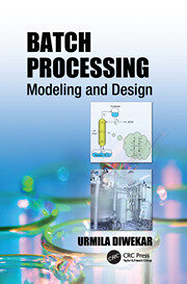Batch Processing Modeling and Design
Material type: TextLanguage: English Publication details: Boca Raton, FL : CRC Press, 2017Description: XVIII, 250 p. : illISBN:
TextLanguage: English Publication details: Boca Raton, FL : CRC Press, 2017Description: XVIII, 250 p. : illISBN: - 9781138076747
- 660.2815 DIW
| Item type | Current library | Shelving location | Call number | Copy number | Status | Date due | Barcode |
|---|---|---|---|---|---|---|---|
 Reference Collection
Reference Collection
|
Seminar Library | Department of Food Engineering | 660.2815 DIW | 2022-23 | Available | 98097 |
SUMMARY:
Although batch processing has existed for a long time, designing these processes and unit operations has been considered an onerous task that required computational efforts. Design of these processes is made more complex because of the time dependent nature of the process and the allowable flexibility. More often than not, every unit encounters optimal control problems. Therefore, traditional design books have not covered batch processing in detail. Filling this void, Batch Processing: Modeling and Design describes various unit operations in batch and bio-processing as well as design methods for these units.
Topics include:
Batch distillation operating modes and configurations
Batch absorption operations based on the solubility difference
Batch adsorption based on differential affinity of various soluble molecules to solid absorbents
Batch chromatography for measuring a wide variety of thermodynamic, kinetic, and physico-chemical properties
Batch crystallization where a phase is used to find the supersaturation at which point material crystallizes
Batch drying that stresses the phase diagram of water to describe this operation
Batch filtration using a porous medium or screen to separate solids from liquids
Batch centrifugation where centrifugal force is used for separation
Batch processes are widely used in pharmaceutical, food, and specialty chemicals where high value, low volume products are manufactured. Recent developments in bio-based manufacturing also favor batch processes because feed variations can be easily handled in batch processes. Further, the emerging area of nanomaterials manufacturing currently uses batch processes as they are low volume, high energy intensive processes. With examples, case studies, and more than 100 homework problems, this book describes the unit operations in batch and bioprocessing and gives students a thorough grounding in the numerical methods necessary to solve these design problems.
